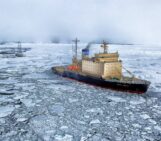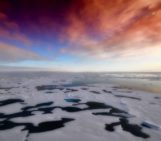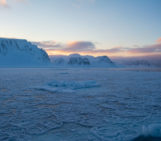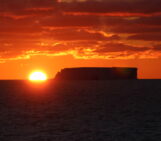
Even as regular readers of the Cryosphere Blog , you might still be unfamiliar with the large amount of regulation that surrounds the cryosphere – and the research that’s being done on it. As effective regulation of our environment is needed, we need more scientists to understand the law and more lawyers to understand the science. So, brace yourselves and hold on tight, while we run through one of the newest instruments of Arctic Governance: the Central Arctic Ocean Fisheries Agreement.
A brief intro to regulating the cryosphere
Before we dive in, a little background information on law in the Arctic. In comparison to Antarctica, where there is one major treaty, the Arctic is regulated by many different international and national instruments. These may be legally binding (treaties) such as the UN Convention on the Law of the Sea (UNCLOS) but can also be in the form of policies, such as the IMO Underwater Noise Guidelines, which are not legally binding.
There are many different organizations that are involved in regulating different issues in the Arctic, such as the Arctic Council and the International Maritime Organisation (IMO) . Additionally, there are regional and national actors, such as individual states, fisheries organisations and indigenous organisations. Finally, there are a bunch of general rules that apply to the Arctic, such as for example the United Nations Convention on the Law of the Sea, and related agreements, such as the UN Fish Stocks Agreement.
The need for a Central Arctic Ocean Fisheries Agreement
As you can see from this very brief summary there is quite a lot of rule-making in the Arctic (if you would like to read more, I recommend you check out the Research Handbook on Polar Law). Surprisingly, though, there are also many gaps and areas that are unregulated. This is why many legal scholars do research on these topics . One of these gaps is in the Central Arctic Ocean. As you may know, this region is currently ice-covered (Fig. 1). However, with climate change, there is a possibility that, as the ice-cover diminishes, new fishing grounds become available.
Certain parts of the Central Arctic Ocean fall under the jurisdiction of the Arctic States, which, according to the International Law of the Sea, they can exploit those resources. However, a big chunk of the Central Arctic Ocean is so called “High Seas”: this is the area beyond national jurisdiction. On the High Seas, nobody has sovereign rights to resources, which means every state, in principle, has the freedom to fish. Those who studied economics probably see a tragedy of the commons problem coming up: if more fishes move into the area because of climate-induced northward migration of species and the ice recedes in the area because of climate change and if everyone can freely fish there, this could mean a serious threat to an ecosystem that we haven’t even studied yet.
The Arctic Five (the five Arctic Coastal States, Fig. 2) became aware of such threat and so they, together with four other states (China, Iceland, Japan, South Korea) and the EU, concluded the Central Arctic Ocean Fisheries Agreement (CAOFA), which entered into force in 2021. The founding states agreed to halt all commercial fishing for the next 16 years. After that, the agreement renews automatically for 5-year periods, unless one of the parties objects. The idea here is to prevent any unregulated fishery from growing in the Central Arctic Ocean before conducting sufficient research on the ecosystem in the area.
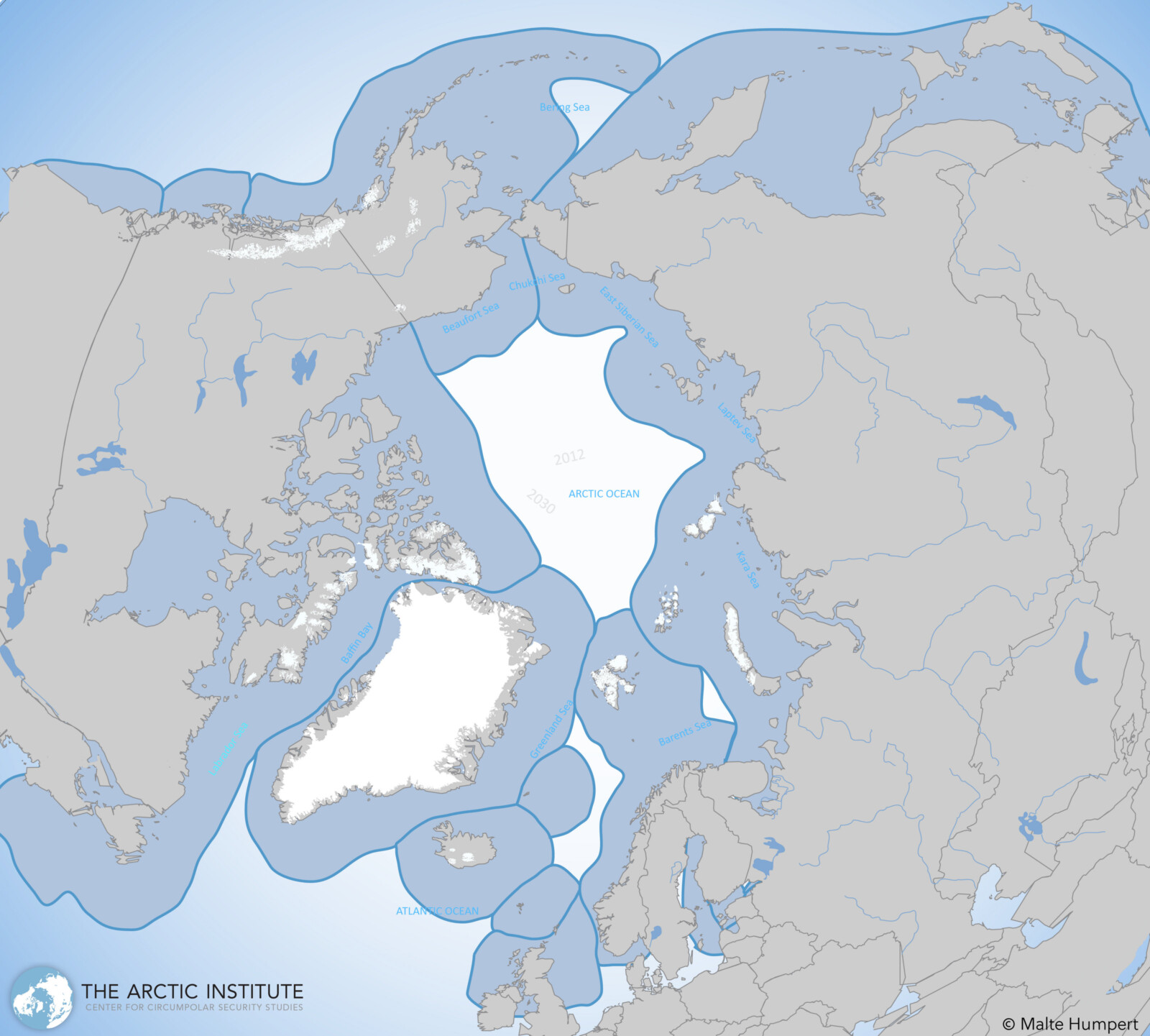
Figure 2: Map of the central Arctic Ocean. In white (not Greenland), the High Seas Portion of the Central Arctic Ocean where receding sea ice may open up new fishing grounds. [Credits: The Arctic Institute and Malte Humpert, map retrieved from https://www.thearcticinstitute.org/arctic-maps/. Country names have been added for readability.]
Precaution, Science and different types of knowledge
There are some interesting aspects of the Agreement that I would like to highlight here. The CAOFA has received praise for being precautionary: parties have acted before commercial fisheries start up in the area, to protect it from overfishing. This is special in environmental law, because usually big treaty processes are only initiated once there already is a problem.
Another cool aspect is the strong focus on science and monitoring within the CAOFA. The agreement establishes a Joint Program of Scientific Research and Monitoring, which is supposed to feed scientific knowledge into the decision-making process around whether sustainable commercial fishery is feasible, and how that should look like. This is an iterative process, where science, at least in theory, informs decision-making (however, the agreement does not specify how much the decision-makers need to listen to the science and what happens if they don’t).
A third, very important issue is that the work in the program needs to consider not only “western” knowledge, but also indigenous and local knowledge. The wording of the treaty (“shall ensure”) is quite strong, creating an obligation for parties to include indigenous knowledge in scientific proceedings relevant to the agreement. This is important, as indigenous knowledge holders not only possess a large body of knowledge on the environment that we don’t have, but also are directly affected by the exploitation of Arctic resources. So, they must be involved in the decision-making, as reflected in the words of the Inuit Circumpolar Council: “Nothing about us, without us”. But, as almost always with international law you need to remember that indigenous people are not states, which means they don’t have voting rights when it comes to making decisions under the agreement, unless states decide otherwise.
Moving on…
Overall, the agreement has the potential to be a stepping-stone for the establishment of an adequate fisheries management regime in the central Arctic Ocean, should that ever become ecologically feasible. But there are also several deficiencies in the agreement. Biodiversity protection, for example, is not explicitly considered. The participating states will need to address this in the implementation of the agreement in the years to come.
The biggest problem for the implementation of the agreement currently is, of course, the political reality in which it is set. The Russian invasion of Ukraine and the following suspension of the Arctic Council’s work has caused a lot of disruption for Arctic Governance. This could be a problem in the future. Regarding the CAOFA, there is some hope though, as Russia did participate in the second meeting of the parties in Incheon (Korea) in 2022. However, the agreement is set in a way whereby, practically, the veto of one party can jeopardize every decision moving forward, as decisions are taken by consensus. So, cooperation and diplomacy are necessary to make this work.
To come back to my original call for interdisciplinary understanding: the agreement shows how strongly different disciplines (law, science, traditional knowledge, politics, economics) and interests are connected. Various elements need to be considered to ensure the regulation matches what is actually happening on the ground. Implementing the agreement is up to the states, but the scientific community can have an important say in this, especially in the CAOFA with its strong reliance on science. So what can we, as researchers, do already right now? Next time you go to a conference, or become active within an association such as APECS (Association of Polar Early Career Scientists), maybe make a ‘non-hard science’ friend – I promise we are quite nice, as long as you don’t tell us we are not real scientists.
Further readings
• Blog post by David Balton “The Arctic Fisheries Agreement Enters into Force”
• “5 Things to Celebrate in New Central Arctic Ocean Fisheries Agreement”
• “The 2018 Agreement to Prevent Unregulated High Seas Fisheries in the Central Arctic Ocean: A Primer”
• Molenaar, Erik J. “The CAOF Agreement: Key Issues of International Fisheries Law.” New Knowledge and Changing Circumstances in the Law of the Sea. Brill Nijhoff, 2020. 446-476.
• Koivurova, Timo, and Akiho Shibata. “After Russia’s invasion of Ukraine in 2022: Can we still cooperate with Russia in the Arctic?” Polar Record 59 (2023)
Edited by David Docquier and Lina Madaj
Johanna Sophie Buerkert is a PhD fellow at the University of Copenhagen (Denmark). Her PhD project focuses on ways to support coastal Arctic socio-ecological resilience to climate change under international law. Using the case of indigenous whaling as an example, the project analyses how international human rights, biodiversity and climate change law contribute to systemic resilience. Johanna is a member of Denmark’s national committee of the Association of Polar Early Career Scientists (APECS). Outside of academia she enjoys sailing, hiking, winterbathing, making music and learning about marine phytoplankton. Contact email: johanna.buerkert@jur.ku.dk.dk, she tweets as @BuerkertJohanna.


